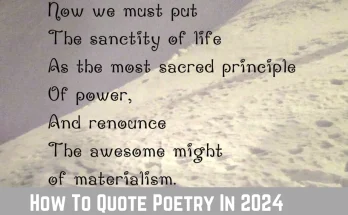William Blake, the renowned English poet, and artist, was an influential figure in the Romantic period. His works often explored profound themes, blending his mystical spirituality with social commentary. This article will delve into the Critical Analysis of The Divine Image by analyzing major themes, symbolism, structure, and profound interpretations it offers.
One of his notable poems, “The Divine Image,” delves into the inherent divinity within every individual. This article will delve into the poem’s themes, symbolism, structure, and profound interpretations it offers.
Critical Analysis of The Divine Image
Understanding William Blake
Blake was a visionary poet who lived in the late 18th and early 19th centuries. He believed in the spiritual and imaginative nature of existence, which heavily influenced his artistic creations.
His poetry aimed to challenge societal norms and conventions while revealing deeper truths about humanity’s relationship with the divine.
What is “The Divine Image”?
“The Divine Image” is a poem from Blake’s collection, Songs of Innocence. It presents a contrasting view to his companion collection, Songs of Experience, by emphasizing the innate goodness within human beings.
Through vivid imagery and lyrical expression, Blake encapsulates the essence of four virtues: Mercy, Pity, Peace, and Love. These virtues are believed to reflect the divine image within every human being.
Critical Analysis of “The Divine Image” A Beautiful Portrayal of Humanity’s Divine Essence
Structure and Language
“The Divine Image” follows a simple yet powerful structure, consisting of four quatrains with an AABB rhyme scheme.
Blake’s choice of language is both evocative and accessible, employing metaphors and vivid imagery to communicate his message effectively.
Key Themes and Symbols
The poem revolves around several prominent themes, such as the divine nature of humanity, equality, and compassion. Blake uses vivid symbolism to convey these ideas, with each stanza portraying a specific divine attribute: Mercy, Pity, Peace, and Love.
Within the poem, Blake employs various symbols and themes to convey his message. The four virtues mentioned above symbolize qualities that are not only essential for human happiness but also reflect the divine nature.
Additionally, the use of children in the poem represents innocence and purity, emphasizing the inherent goodness present in all individuals.
Compassion and Mercy
Blake’s poem highlights the significance of compassion and mercy in the human experience. He urges individuals to embody these qualities, fostering a kinder and more empathetic society. By embracing mercy and pity, humans can mirror divine attributes.
Interpretation and Meaning
Blake’s Views on Humanity and God
Blake’s “The Divine Image” offers a glimpse into his views on the relationship between humanity and the divine. Through the four virtues, Blake suggests that humans possess inherent goodness that reflects the divine qualities of God.
This implies that every individual is capable of embodying and expressing love, mercy, pity, and peace. Blake suggests that every human being possesses the divine image, highlighting the inherent goodness and potential for virtue in all of us.
This idea challenges the prevailing religious and societal beliefs that perceive humans as inherently sinful or flawed.
The Four Virtues: Critical Analysis of The Divine Image
Each of the four virtues highlighted in the poem holds deep significance. Mercy represents compassion and forgiveness, while Pity embodies empathy and understanding.
Peace symbolizes harmony and unity among individuals, and Love encompasses affection and goodwill toward others. Together, these virtues contribute to a society based on mutual respect and understanding.
The Message of Equality and Brotherhood
One of the central messages conveyed in “The Divine Image” is the importance of equality and brotherhood among all human beings.
Blake argues that regardless of social status, race, or religion, every person carries the divine image within them.
This challenges the prevalent social hierarchies and calls for a more inclusive and compassionate society.
Historical Context and Influences
Blake’s Romanticism and Revolutionary Ideas
Blake’s work was deeply rooted in the Romantic movement of the late 18th and early 19th centuries.
The Romantics sought to emphasize emotions, imagination, and individuality, often challenging societal norms and institutions.
Blake’s revolutionary ideas and criticism of the established order align with the spirit of Romanticism.
Significance and Impact of the Poem
Reception and Critical Analysis
Since its publication, “The Divine Image” has garnered significant attention from literary critics and scholars. Its exploration of human virtues, divine equality, and the power of love has resonated with readers across generations.
The poem’s enduring relevance lies in its ability to evoke introspection and inspire individuals to embrace their inherent goodness.
Conclusion
“The Divine Image” by William Blake remains an enduring testament to the inherent goodness present within every individual.
Through the exploration of virtues and symbols, Blake’s poem invites readers to contemplate their relationship with the divine and their fellow human beings.
It emphasizes the power of love, mercy, pity, and peace in creating a more just and compassionate world.
Frequently Asked Questions
William Blake’s notable works include “Songs of Experience,” “The Tyger,” and “The Marriage of Heaven and Hell.”
Blake’s artistic style, characterized by intricate illustrations and visionary symbolism, often interweaved with his poetry, enhancing the overall meaning and impact.
Innocence symbolizes the innate goodness present in all individuals, as well as the potential for positive change and the pursuit of divine virtues.
The poem challenges societal norms and hierarchical structures, advocating for equality, compassion, and unity—a reflection of Blake’s revolutionary ideals.



